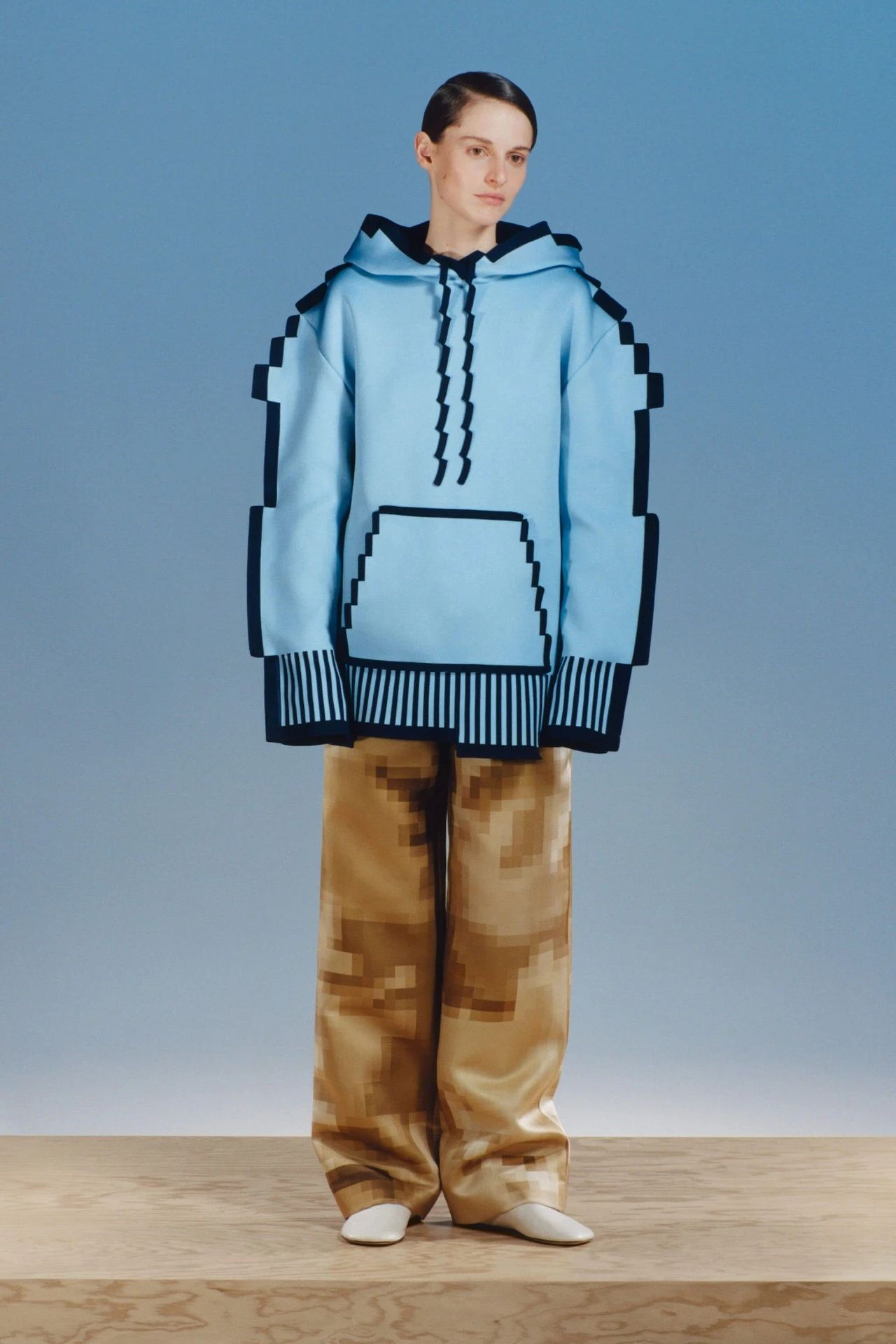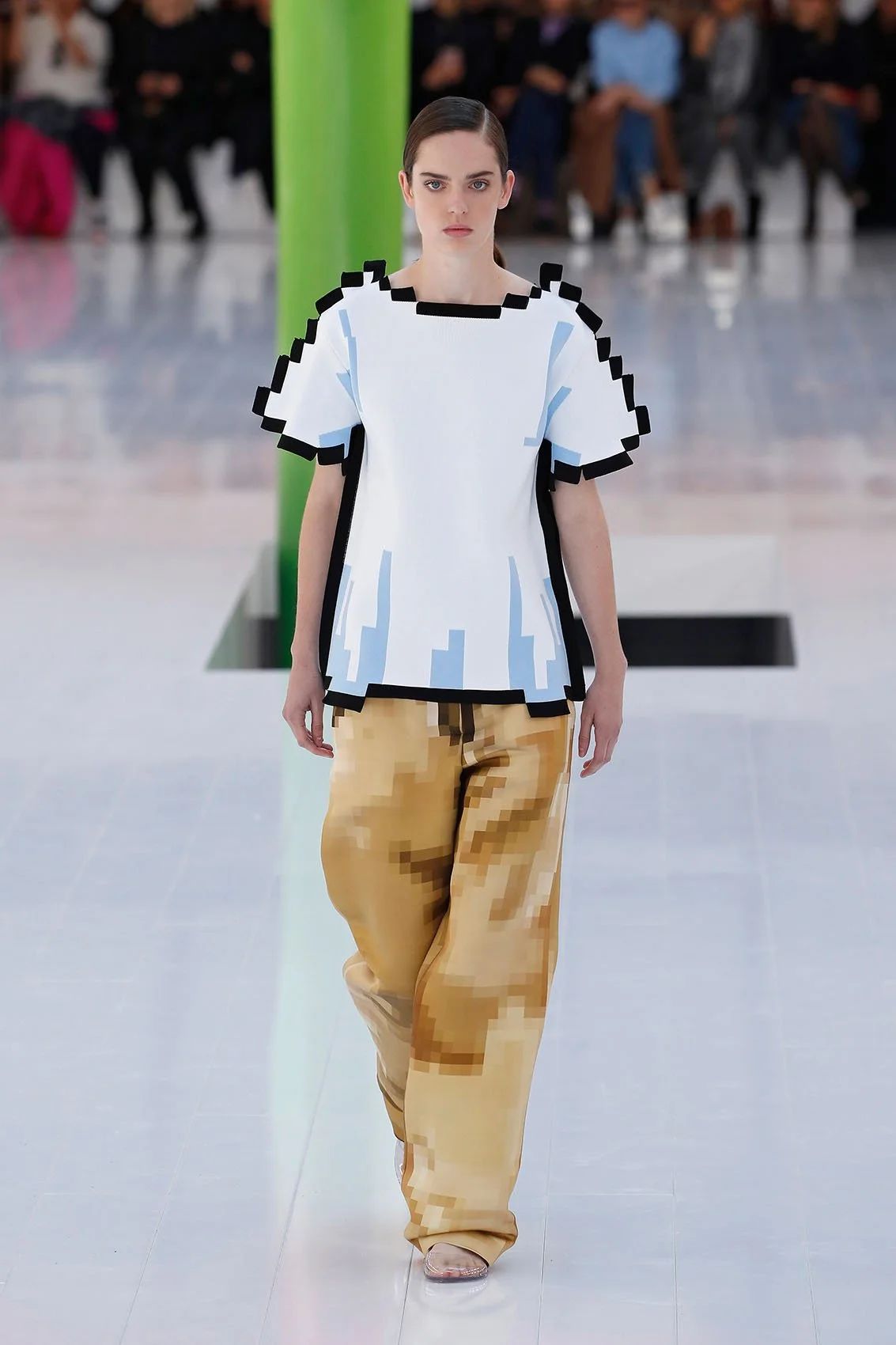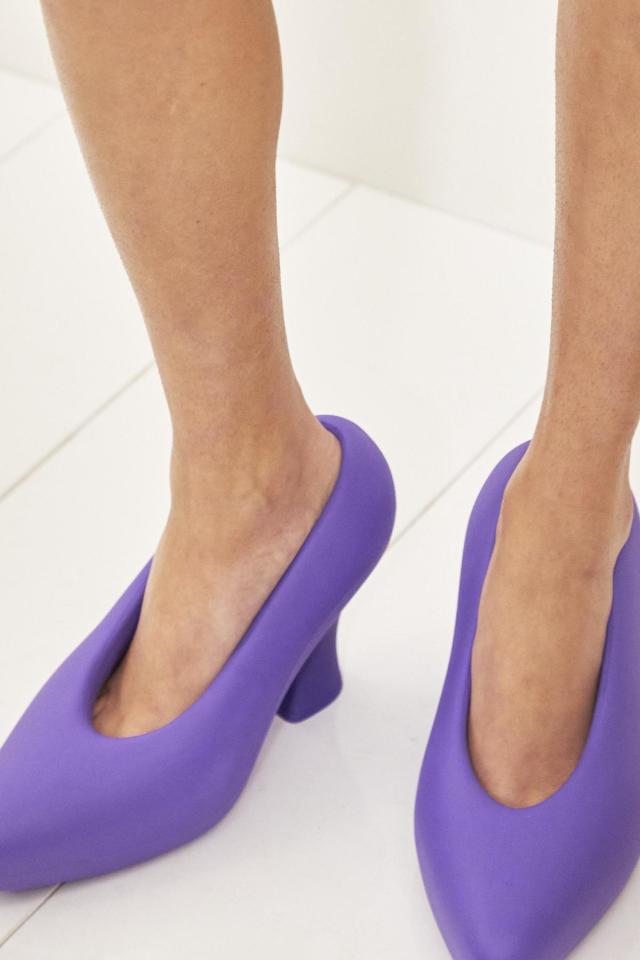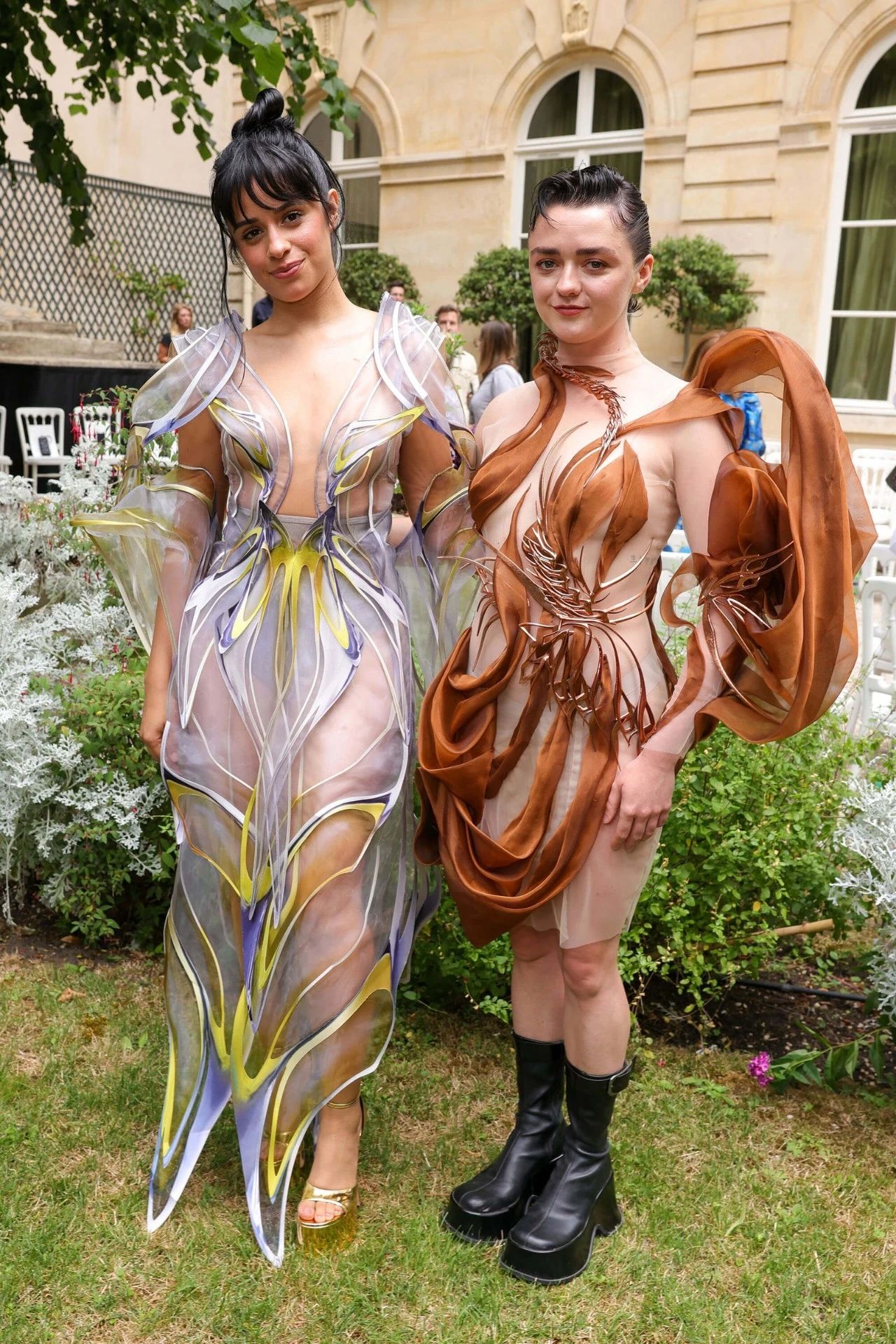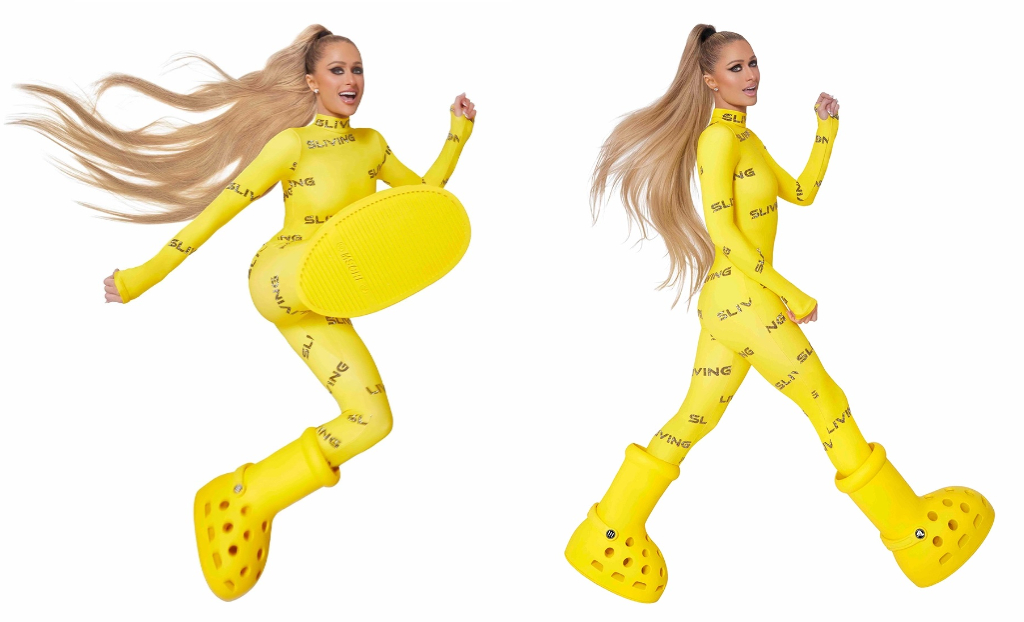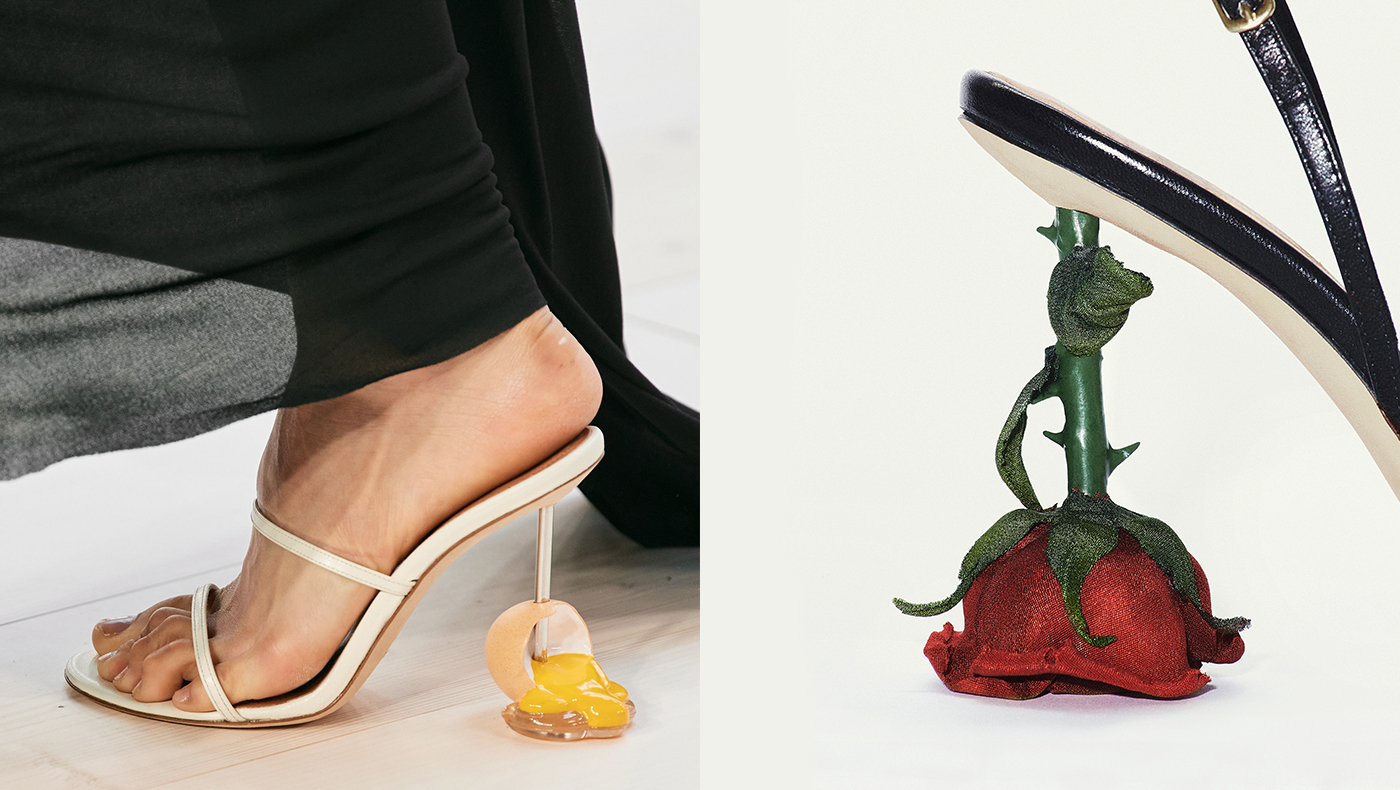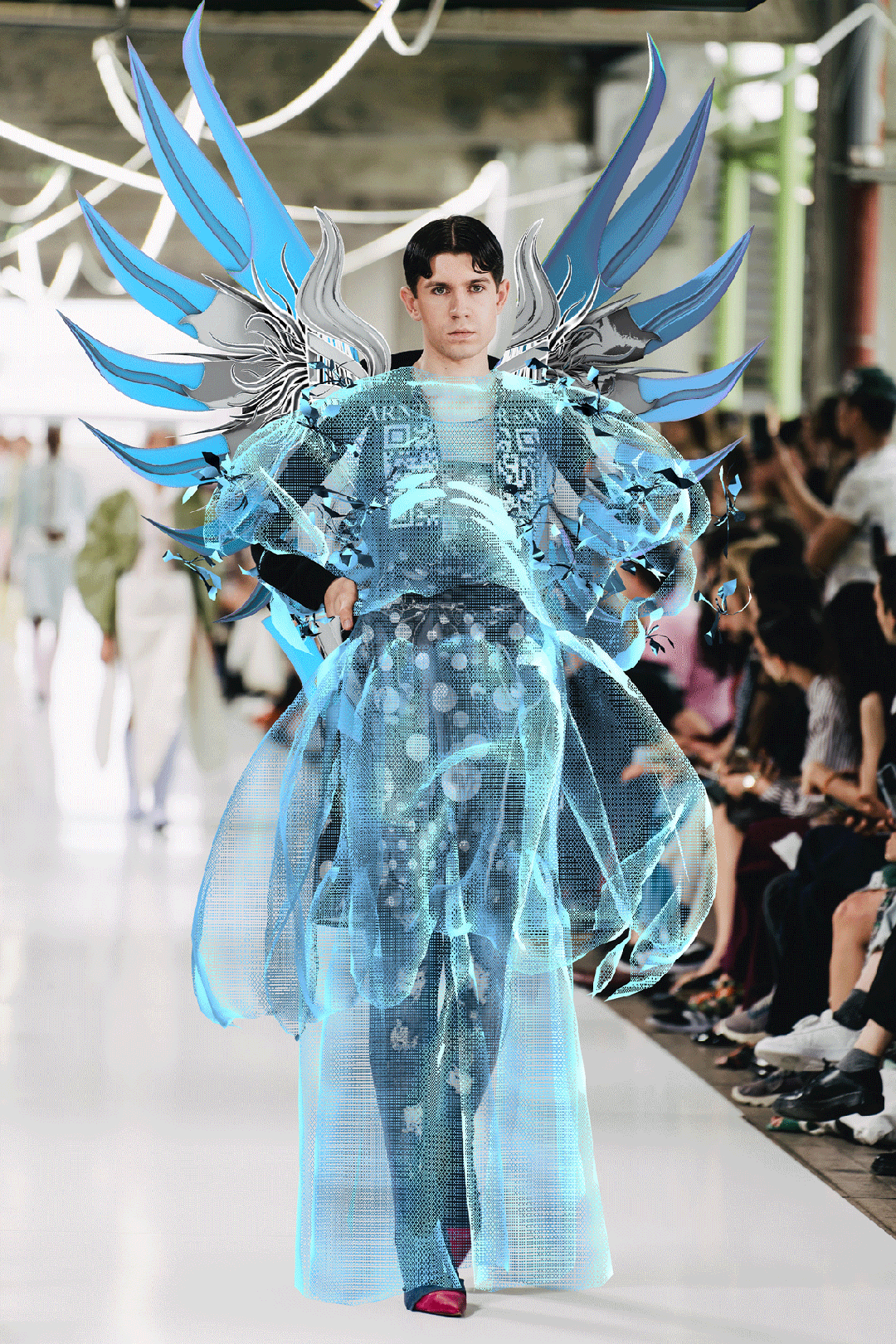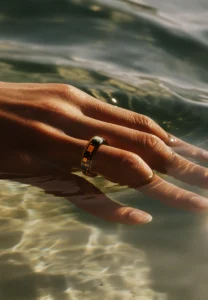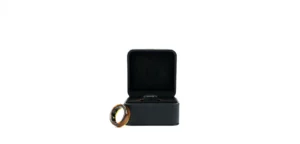The fashion industry is accelerating its embrace of a surreal aesthetic that blurs the boundaries between reality and the virtual. For luxury brands, this is also a new source of creative inspiration to attract generation Z consumers.
Loewe's Spring/Summer 2023 collection is a prime example, in which designers have developed a collection of pixel-style clothing capsules that have become popular on social media. Creative Director Jonathan Anderson asked a series of questions worth pondering in the show notes: “Are our lives falling into the screen of mobile phones? Are humans merging with mobile phones? Does this have any relevance to the era and society we live in?”
According to Lyst Index, Jonathan Anderson's deep embrace of surrealist design helped Loewe become the hottest brand worldwide in the second quarter of 2023.
* Image source: Loewe *
The surrealist trend is fully reflected in the 2024 spring and summer menswear show in Paris and the 2024 autumn and winter haute couture fashion show. When the Pharrell Williams made its debut at Louis Vuitton (Louis Vuitton), it showed off suits, hoodies and bags made of pixelated camouflage patterns, which looked like the crypto-punk NFT was worn directly on the body. The opening of the Dior menswear show was like the beginning of a video game, with models walking out on the soundtrack of retro robot beats. Actor Maisie Williams and singer Camila Cabello attended the Iris van Herpen fashion show wearing gowns that also looked like they had been downloaded from the virtual world.
* Pharrel Williams's first Louis Vuitton show features a pixelated camouflage pattern. Photograph: Acielle/Styledumonde *
“For fashion brands, adding virtual elements to real life is not only a way to engage in conversation, but also a starting point to create heat,” said Marta Indeka, senior analyst at Strategic Foresight Consulting's Future Lab. “The physical clothing of virtual aesthetics enables designers to create new and interesting products with the potential for viral transmission-this is the key to attracting the Z generation customers.”
Loewe has been experimenting with surreal designs over the past few seasons, including digitally rendered hoodies, T-shirts and pants, incredible 3D clothing, and real-life rubber simulacra similar to Minnie's high heels.
* Loewe Minnie rubber heels *
“These viral moments are elevating Loewe's brand image: it not only allows us to engage consumers in a crowded market, but also showcases the brand's creativity and craftsmanship, reaffirming our position as a global luxury brand,” said Pascale Lepoivre, CEO of Loewe.”
#01.
# From practicality to ornamental
Can surrealism change the direction of fashion?
“Being in this society of wonders, we share the image of a costume, not just its function,” said trend commentator Agustina Panzoni.
“A lot of people are spending more time indoors and online, so the way we dress in the digital world has become important. For this reason, we are starting to change the demand for fashion-how it hijacks algorithms and produces interesting sounds, rather than [focusing on] its wearability.”
She points out that the growing interest in digital fashion-that is, clothes that can be worn online without a physical presence-has fueled the fashion industry's surrealism. “That's why Mschf's red simulation boots fascinate me because they're not meant to be worn. Just a piece of art we wear.”
* Maisie Williams and Camila Cabello at the Iris Van Herpen Autumn/Winter 2023 couture show. Photograph: Pierre Suu/Getty Images *
Mschf, an American art agency, jokingly said in a press release in February that “the shape of the red artificial boots is really not like a foot, but very like a boot” and that they “let us get rid of the shackles of reality”.
The best-selling of this product encouraged Mschf to launch rhubarb boots in cooperation with Crocs at an event led by Paris Hilton (preview in Paris in June; released on August 9). Today, designer Victoria Beckham, rapper Coi Leray and music producer Diplo all wear the boots in the real world.
“Every time you do something as big as a boot, more and more people start discovering you,” says Daniel Greenberg, co-founder of Mschf. “That being said, we ‘ve done over 100 different projects in the last four years, and I think that's what's really interesting about people coming to us through these moments of viral marketing and then discovering more of our work.”
Loewe also proved that engagement can translate into sales. “When Loewe first introduced lipstick, rose and egg heels, we sourced all of them because they were so much fun and we all loved them,” said Tiffany Hsu, vice president of fashion at Mytheresa. “They are doing well with us. The products are not cheap, but they are now a collectible.”
Natalie Dickson, head of ladies' luxury in Flannels, agrees. “Loewe's pixel collection is synonymous with Flannels youth-centric, future-oriented brand identity-both are virtual and real worlds colliding,” she said.
“The vast majority of our customer base uses social media and online displays to shape their aesthetic and personality. We see people's interest in items that go viral, which are usually driven by the hype during the show season, and then immediately interest customers when it reaches the store.”
#02.
A new kind of authenticity
Panzoni, a trend commentator, says younger consumers spend more time online than older consumers, and are therefore more likely to see brands understand their online culture. “The combination of the virtual and the real is beginning to represent the meaning of authenticity more clearly than just keeping things in the only physical world,” she said. “In an age when we are so frequently online, does this reality well reflect the real situation of current life? Or, when the Internet is so deeply integrated into everything we do, digital represents authenticity more?”
“The AI revolution is changing the way we think about reality,” she added. “Does it matter if it looks like a cartoon and looks a little silly?” she said, referring to Mschf's red simulation boots.
* Diplo wears Mschf's red boots. Photograph: Nathaniel S. Butler/Getty Images *
Indeka at Future Labs sees great potential for luxury brands to overlap in craft and digital technology. “Technology-driven craft, or craft machine ships as we call them, will be a must-have tool for brands to try to create the physically impossible, unleashing creativity to gain an edge in a market where the line between the web and reality is blurred,” she said.
The blurring of the world is accelerating. In June, 20-year-old designer Andrea Albrizio showed off the AR look at its debut in Paris. His physical show includes a physical piece containing a QR code that unlocks the garment's digital expansion.
* Photo by Andrea Albrizio *
He stressed that the core focus remains on physical fashion. “For me, numbers will never replace entities because fashion needs to be seen, fashion needs to be touched, and fashion needs to be present,” he said.
However, he is excited about the concept of a digital extension of clothing. “Our goal is to make this element practical-otherwise consumers will quickly lose interest,” he said. His next series will be “reconnecting with fashion through gamification”, dedicated to video game themes and ideas.
There is no doubt that the successful combination of virtual and real narrative of the fashion brand will be successful in the next few years.
* Big Latto at the Iris Van Herpen 2023 fall/winter haute couture show. Photograph: Pierre Suu/Getty Images *
(Source: Vogue Business)


